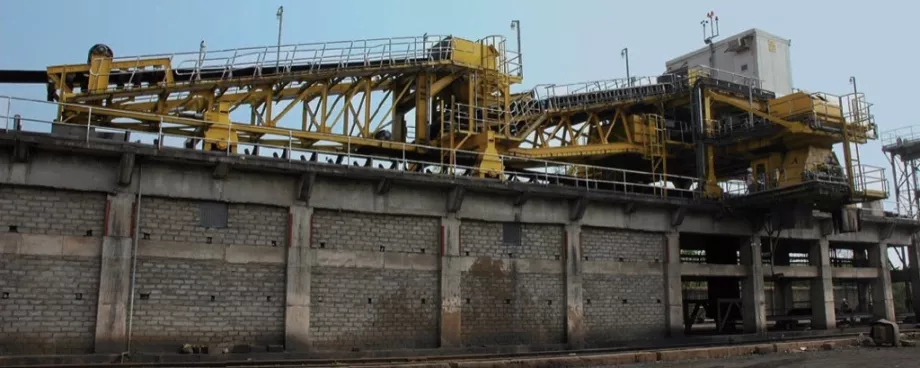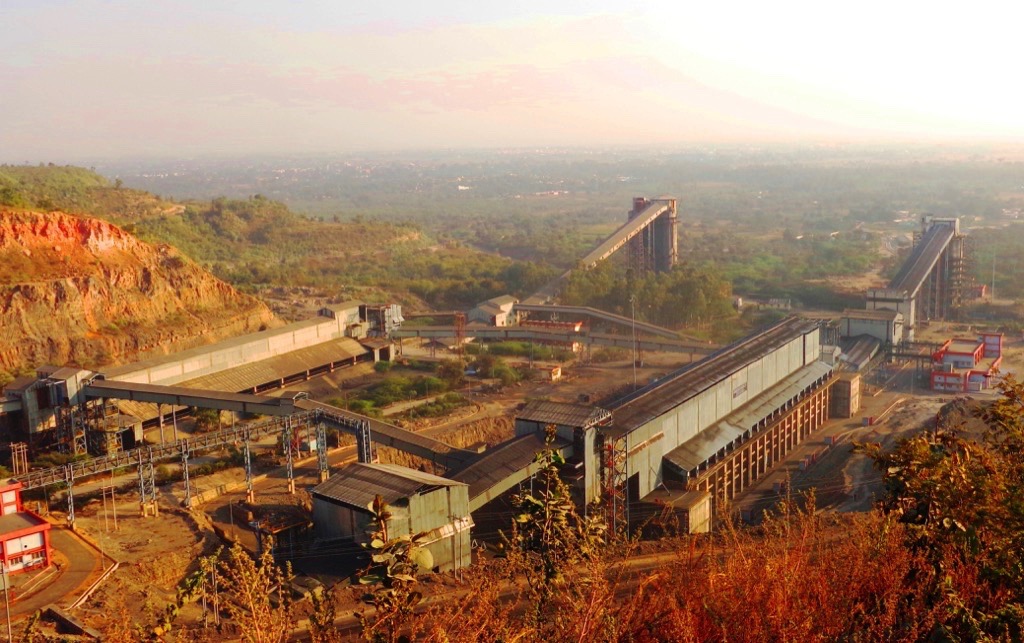
India is blessed with huge mineral resources particularly coal, iron ore, bauxite, etc. Increased coal production is the urgent need of the hour. Proper assessment of the reserve and the quality of coal is yet to be completed; the available figure indicates an estimated coal reserve of some 300 billion tonnes as of April 2014. The mining industry is facing a big challenge of achieving the targeted increase of coal production due to the difficulty faced in evacuating the mined coal and dispatching it to thermal power plants.The purpose of our present article is to address the issue of improvement in coal evacuation from mines thereby increasing the net coal output of the mine based on experience gathered while executing different projects.
Present Practice in Mines
Currently coal extracted from mines are crushed to the required size, stored and loaded into railway wagons for transportation as and when wagons are available.
Wagon Loading through Rapid Loading System
Coal is taken from storage through one of two conveyor systems (one standby system) with capacities varying between 2000 t/h and 3600 t/h to RCC silo with a capacity of 3000 to 4000 tonnes.
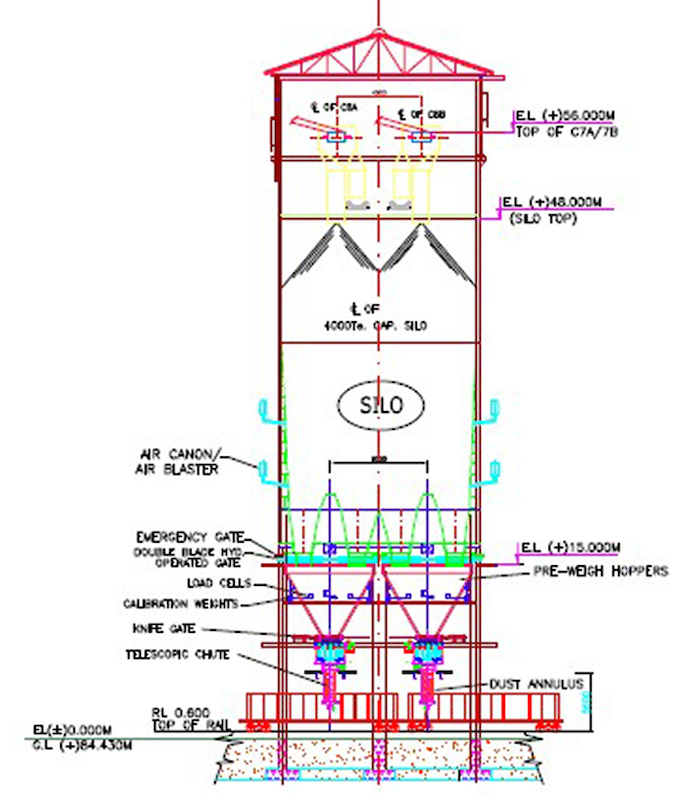
For a two track railway system, the silo is equipped with four mouth openings through which it loads coal to two pre-weigh bins of 72 metric tonnes each. The bottoms of the pre-weigh bins are fitted with swing or telescopic chutes depending on plant layout and coal specifications to ensure loading of the correct quantity into each wagon. A schematic sketch of the above system is shown below. In some of such projects, a small improvement has been achieved by using silos of 500 t capacity. Ready references of such installations are available. Balance items like 72 metric tons pre weigh hopper etc., are same as described above. This option saves some amount of capital cost. But the total time duration of entry and exit of the rake remains unchanged.The main concept in this system is that the wagons are in motion and coal is loaded from stationary pre-weigh bins to wagons. The system is fast, the accuracy is good; usually the time taken for loading a rake of wagon varies from 1 to 1.5 hours.
Advantages
- There are two belt conveyors feeding to RCC silo. In stabilized state, it is assumed that input and output from the silo will be constant. The standby conveyor is a redundancy for ensuring uninterrupted wagon loading against any eventuality of the operating conveyor.
- 3000-4000 Ton of coal available in the silo acts a buffer stock so that one full rake can be loaded without any delay even if both feeding conveyors are out of operation.
Disadvantages
- The advantages indicated above clearly shows redundancy/standby arrangements are a practice followed and it is time to challenge ourselves to come out of this comfort zone. To elaborate it further, we store coal in RCC ground bunker (1st redundancy), extracted coal are carried by two conveyors to feed RCC silo (2nd redundancy), additional storage in rapid loading silo (3rd redundancy). With design factor of safety inbuilt in to the system, plant is capable of producing double the capacity than what is being indicated normally. Change in this mindset is first and foremost requirement of today. Present industries need to be cost effective and prompt in services.
- 3000-4000 ton RCC silo is a tall installation which requires considerable capital cost and construction time. Further ensuring flowability of coal through silo during different weather conditions is a challenge.
- Only proper operation and maintenance of Rapid Loading System ensures feeding to wagons.
- The disadvantage of this system is the long time taken for shunting the wagons to bring it to the loading zone. Subsequently wagons are pulled at creep speed to ensure proper loading. As described earlier, loading operation takes 1 to 1.5 hours whereas shunting of the empty wagons, loaded wagons and coupling with the engine for taking out together takes almost 4 to 5 hours. This shunting time if avoided can lead to considerable improvement in turnaround of the rakes resulting in higher coal evacuation from the mines.
Present Practice in Ports
Imported coal is unloaded from ship at ports and is stockpiled. Wagon loading is done through rapid loading system with 3000-4000 ton silo but only one conveyor of 3700 t/h capacity is used to feed the silo, thereby reducing the redundancy factor and increasing the efficiency of operation.
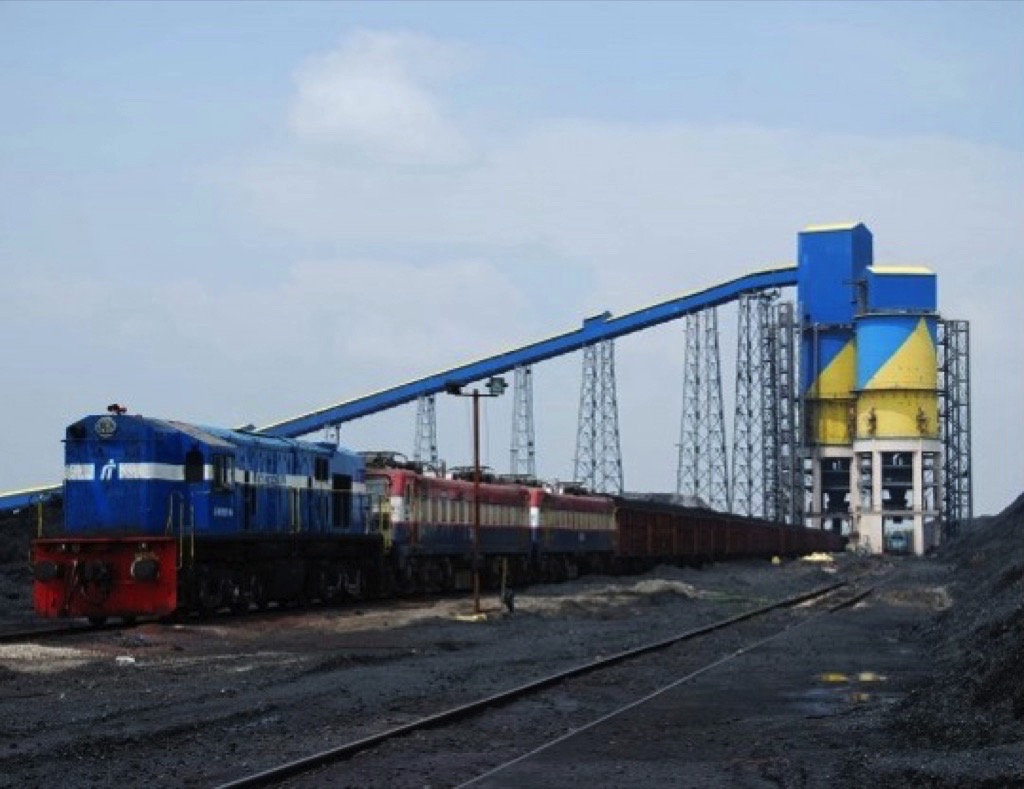
Some ports are using mobile wagon loading equipment for loading into wagons. This equipment moves over rail which can be either at ground level or at an elevated platform. The mobile equipment (combination of travelling tripper with shuttle head) along with swing chute mechanism loads one wagon after other, which receives feed from the conveyor spanning by the side of railway wagons all along. In this system, entire rake is stationary and equipment is moving. A sketch of this system is shown below.
Advantages
- Reclaimed coal from the stockpile is fed to the wagons directly through mobile machine and problems related to flowability, etc., during different weather conditions is much less.
- Equipment is comparatively simpler, user friendly, lower in capital cost and construction time
Disadvantages
- This system also takes almost equal time for loading, shunting of empty and loaded wagons in comparison to loading through rapid loading system
- This system is not so popular in the mining industry
Proposed System
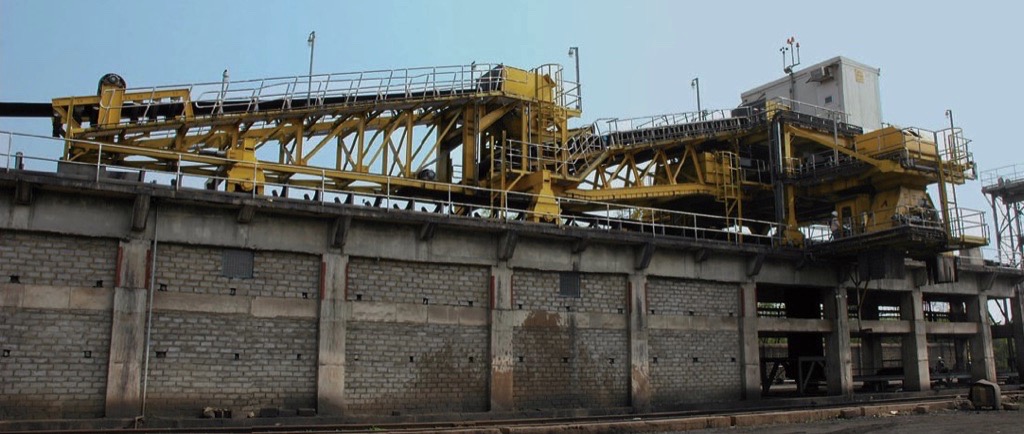
It is evident that in the whole process of rake turnaround, the major time consuming activity is shunting of empty & loaded wagons which need to be minimized. This in turn will help in large quantum conveying of coal from mines without additional capital expenditure or dedicated rail lines for the movement of coal.We propose a system where wagons are loaded by mobile wagon loading equipment while rake is also moving at creep speed pulled by locomotive. In such situation both rake and coal loading equipment will be moving together. This will enable us to avoid splitting of rake. System is detailed below.
- A single conveyor brings coal directly from the crusher house at the rate of 4000 t/h (rated)
- No additional intermediate storage or sophisticated loading system is required other than a simple mobile wagon loading equipment – simpler version of a stacker. A small surge hopper is provided at the discharge end of the tripper discharge to take care of the material while changing the position of the swing chute of the wagon loader from one wagon to the next. Also, a shuttle conveyor can be utilised if a railway line is to be provided on either side of the wagon loader.
- This mobile loading equipment will move on rails besides rake so that wagons are filled based on their type and capacity. Sensors are also suitably located to determine the type of wagons/length and speed. The travel speed of the loading equipment is suitably synchronized based on the wagon hauling speed. The changeover time of swing chute mechanism is determined based on the length of the wagons.
- This system through belt scale and in-motion weigh bridge feedback mechanism that ensures that wagons are loaded with correct quantity and accuracy as specified by Indian Railways.
- This proposed system will also look like the same as shown in the sketch of mobile wagon loader but the rail of the machine will be located at ground level.
Conclusion
The system proposed has nothing new but it is a combination of existing two different proven methods. It is only the mindset and courage which will enable us to implement it in the coming days to gain the benefit.
| About the Authors | |
| Pabak MukhopadhyayVice President & Head Bulk Material Handling-SMPS BULarsen & Toubro Limited-MMH IC, India | |
| S. ChandrasekarManager Bulk Material Handling-SMPS BULarsen & Toubro Limited-MMH IC, India |
■



